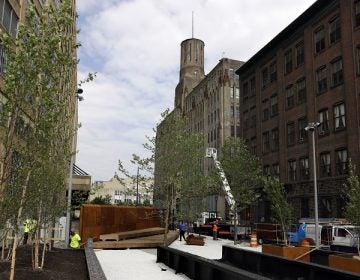DAGspace: Looking Up on Broad Street

Looking Up on Broad Street
By David Brownlee
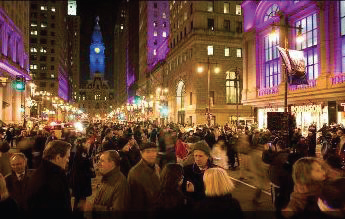
The Avenue of the Arts has begun to accumulate critical mass. The sidewalks of South Broad Street are now crowded day and night, and since 2008 the evening sky has pulsed to a magical rhythm as the lighted building facades change color.
Despite the recession, things are indeed looking up on Broad Street, and this would be a good time for us to crane our necks and take a real look upwards as well, so we can appreciate just how much of the visual liveliness of this street is the product of its marvelous collection of turn-of-the- twentieth-century commercial architecture—including a large number of Philadelphia’s earliest skyscrapers. The chateau-esque pinnacles of the Bellevue Hotel, the boldly massed modern classicism of the Fidelity (now Wells Fargo) Building, the strong cornices of the two Land Title towers, and the Art Deco belfry of the PNB (built as the Lincoln Liberty) Building rise together with City Hall’s tower to create one of the world’s most distinctive and animated skylines.
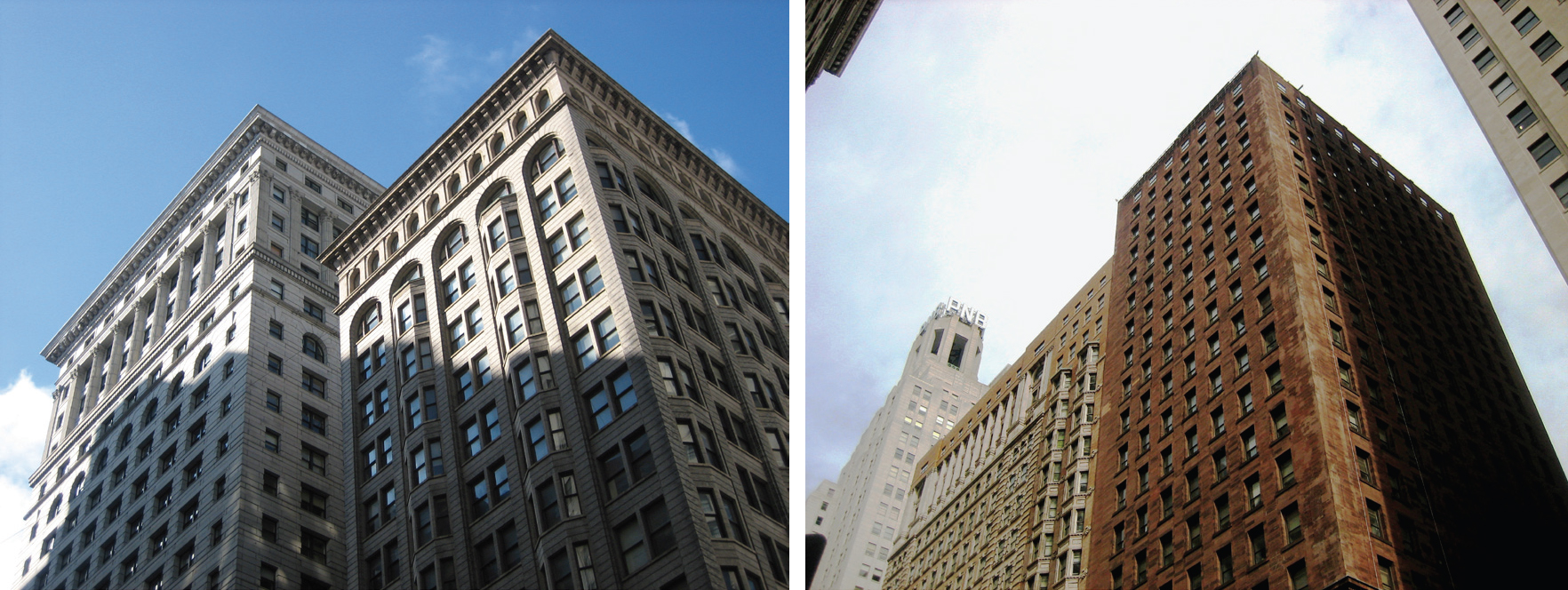
But all is not well at the rooftop level, and four of the most significant buildings in the first blocks of South Broad come up short, architecturally speaking. They have lost their crowning ornaments to the vicissitudes of age, taste, and economics, and they now stand like bareheaded bystanders at a fancy hats competition. The seriousness of this loss is highlighted by a comparison of the two towers of the Land Title and Trust Building (100-118 South Broad, 1897-98, 1902, Daniel Burnham architect), still proudly scribing the sky with their decisive entablatures, and the two bald buildings directly across the street, the Real Estate Title and Trust Building (now called the Avenue of the Arts Building, 101 South Broad, 1897-98) and the North American Building (121 South Broad, 1900).
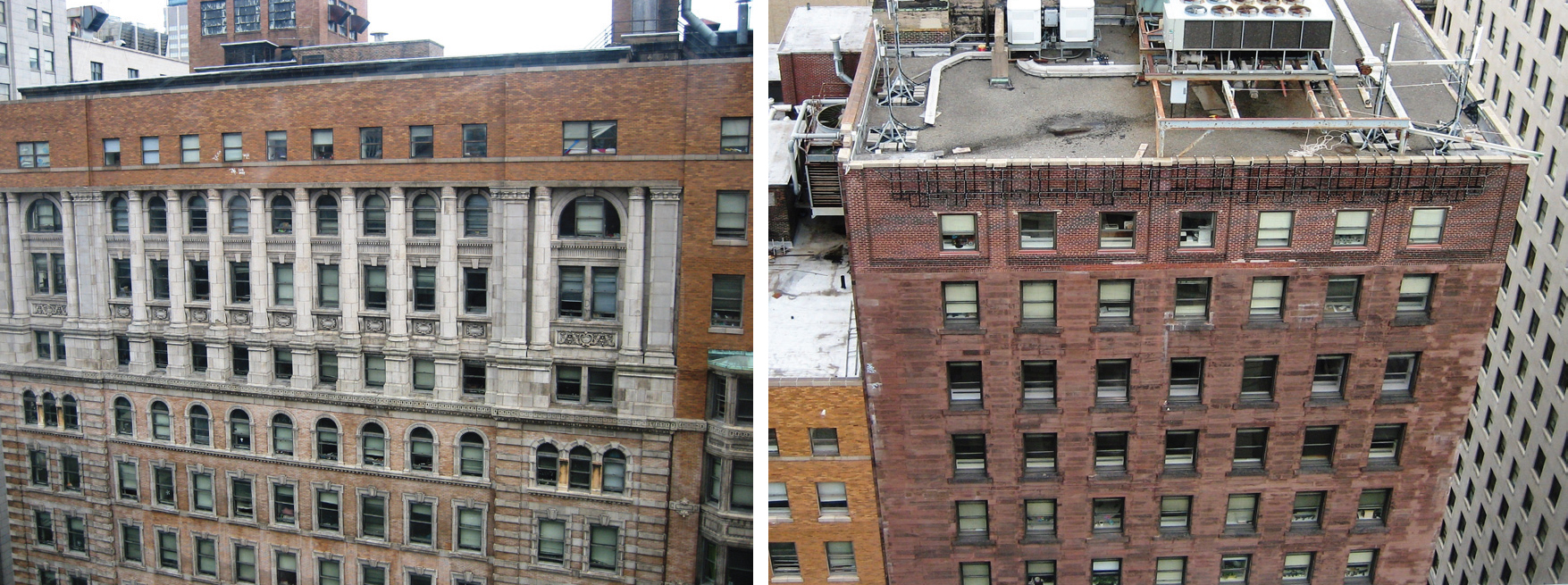
There is something genuinely brutalized about the decapitated appearance of the latter pair, cut off, as it were, just at the point where they were fulfilling their ambitions to scrape the sky.
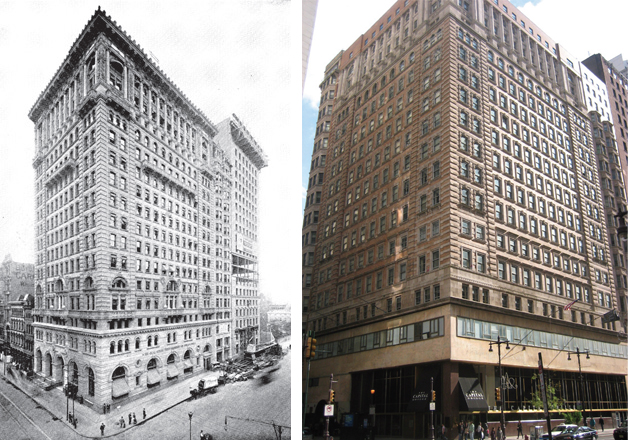
This is no way for a great building to end! It was not always so, and these two buildings once concluded with decisive capping gestures, obeying the architectural law that prevailed in all the centuries before modernism, which prescribed that a building had to have a discernible bottom, middle, and top.
The Real Estate Title and Trust Building was designed by one of Philadelphia’s most versatile gilded age architects, the Paris-trained Edgar V. Seeler.
Capable of designing in Richardsonian Romanesque (First Baptist Church on Seventeenth Street), Georgian Revival (Curtis Publishing Company Building on Washington Square), and Queen Anne (Hayden Hall at Penn), on South Broad Street, Seeler created a lushly detailed brick and terracotta exercise in Venetian Renaissance classicism. Its crowning glory is a two story attached colonnade at the sixteenth and seventeenth floors. The columns survives, but the colossal cornice that once gave the building a suitable topping was removed (along with the balconies), apparently at the same time that the lowest two floors were modernized for Western Savings Bank in the 1940s. But while the new street-level façade is a strong statement of International Style modernism, rendered in pink marble, the top of the building, once shorn, was left naked.
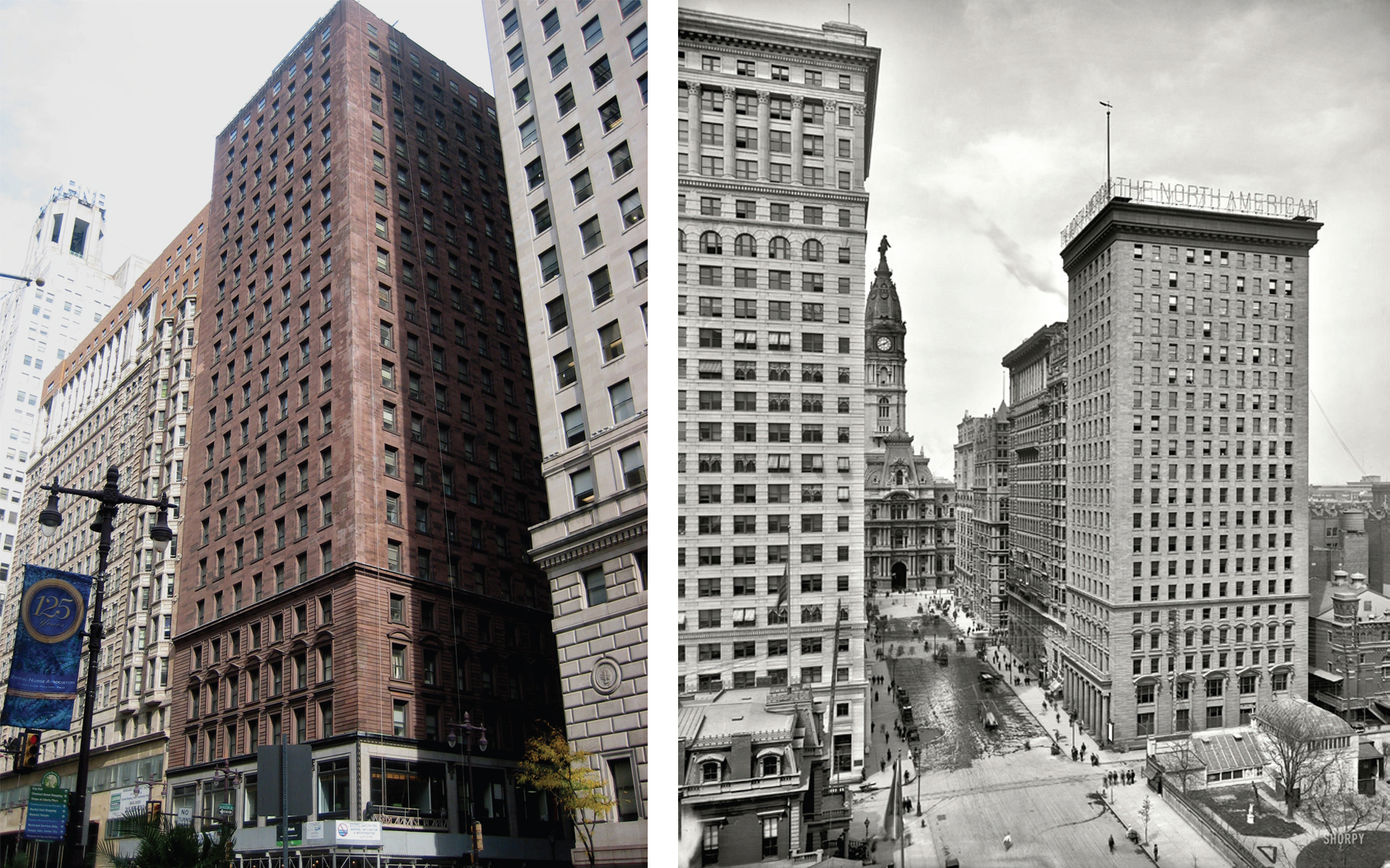
As if to demonstrate the variety of architectural expression that turn-of-the-century designers could wring out of the classical vocabulary, the adjoining North American Building lofts an almost unadorned brownstone shaft from the street to its once mighty cornice.
The building was created by James Windrim (who by this date had turned over the design work to his son John) for Thomas Wanamaker, son of the great department store founder. The young Wanamaker had bought the North American newspaper with the aim of offering an alternative voice to the city’s other papers, which were largely loyal to the ruling Republican machine, and the Windrims created for him a building as strong and sincere as his journalistic project. The story-high cornice that crowned the North American was unusually plain, but it carried the name of the crusading newspaper in lights. In the 1920s the austere neoclassical ground floor was replaced by a prettier Adamesque confection, more in tune with the taste of the times, and the simple but emphatic cornice also fell victim to modernization—although no replacement was mounted.
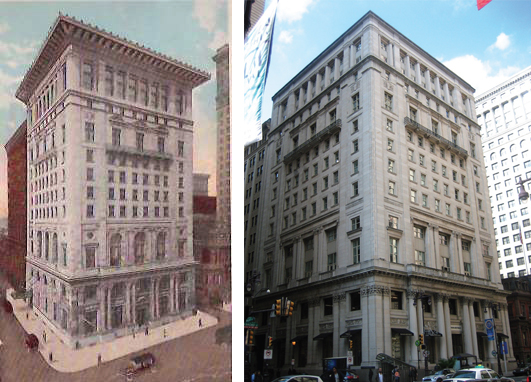
The west side of Broad Street was the site chosen for the clubhouse of the Philadelphia’s Manufactuers’ Club, an organization that embodied the city’s industrial preeminence as the “Workshop of the World.” Fittingly, they chose to build themselves a small, limestone- clad skyscraper at the dawn of the new century.
Designed by the firm of Simon and Bassett and built in 1911-14, the address of the Manufacturers’ Club’s present reincarnation as an apartment building is 1401 Walnut Street. Before that reorientation, it, too, suffered a bad haircut: although a modest molding was left to mark the crown, the giant Florentine shadow caster, proportionately one of the biggest cornices in the city, was removed.
Surely the greatest of the degraded monuments on the Avenue of the Arts is the former Ritz Carlton Hotel, now the Daniel Terra Building of the University of the Arts (211 South Broad). It is also the building whose recent treatment points to a possibly brighter future for its proud but battered kin.
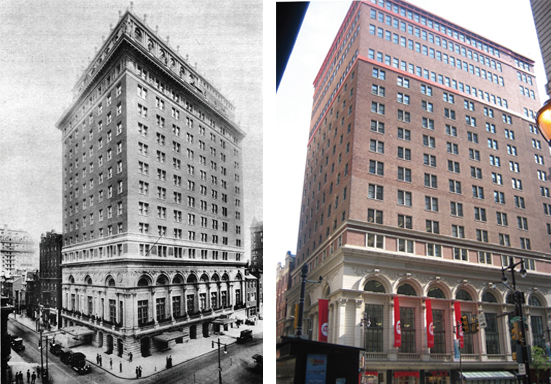
Famously, the Ritz Carlton was built by George Widener in 1911-12, after his wife was asked to leave an event at the Bellevue-Stratford Hotel, where she had lit a cigarette. Horace Trumbauer, the Widener family’s favorite architect, was the designer of this hotel for smokers, and he demonstrated his versatility with a fashionable mixture of English Georgian and American Colonial details, executed in red brick and terracotta. First to be built was a sliver of a building with only 49 bedrooms, designed chiefly to accommodate major celebrations in its ballroom and other assembly halls. Although George Widener and his son lost their lives when the Titanic sank in 1912 (they had gone to Paris to hire a chef for the hotel), the Ritz Carlton prospered, and in 1914 it was tripled in size.
The hotel’s conversion to an office building in the 1950s was accompanied by an especially savage removal of the decorative top hamper—which comprised both a large cornice and an arcade circling the rooftop garden—and of the classical cumber bum that wrapped the lower floors.
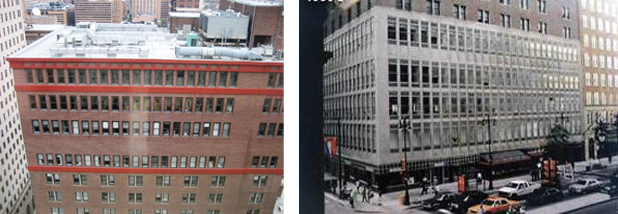
Happily, when the University of the Arts renovated the old hotel as it neared its one hundredth birthday, they commissioned Cope Linder architects and the Masonry Preservation Group to recreate the original decoration of the lower stories. The terracotta ornament had not been removed from the rear elevation, providing a model for the replacement.
The new details were made of Glass Fiber Reinforced Concrete (GFRC), a lightweight substitute for stone and terracotta that can be molded in almost any shape.
With GFRC, it is possible to contemplate putting something back on the tops of the bare headed architectural monuments of the Broad Street as well. Given the other alterations that these grand buildings have endured, full-blooded historical restorations may not be possible or desirable in all cases. But that only broadens the opportunities for smart building owners and inventive designers to reattach these skyscrapers to the sky.
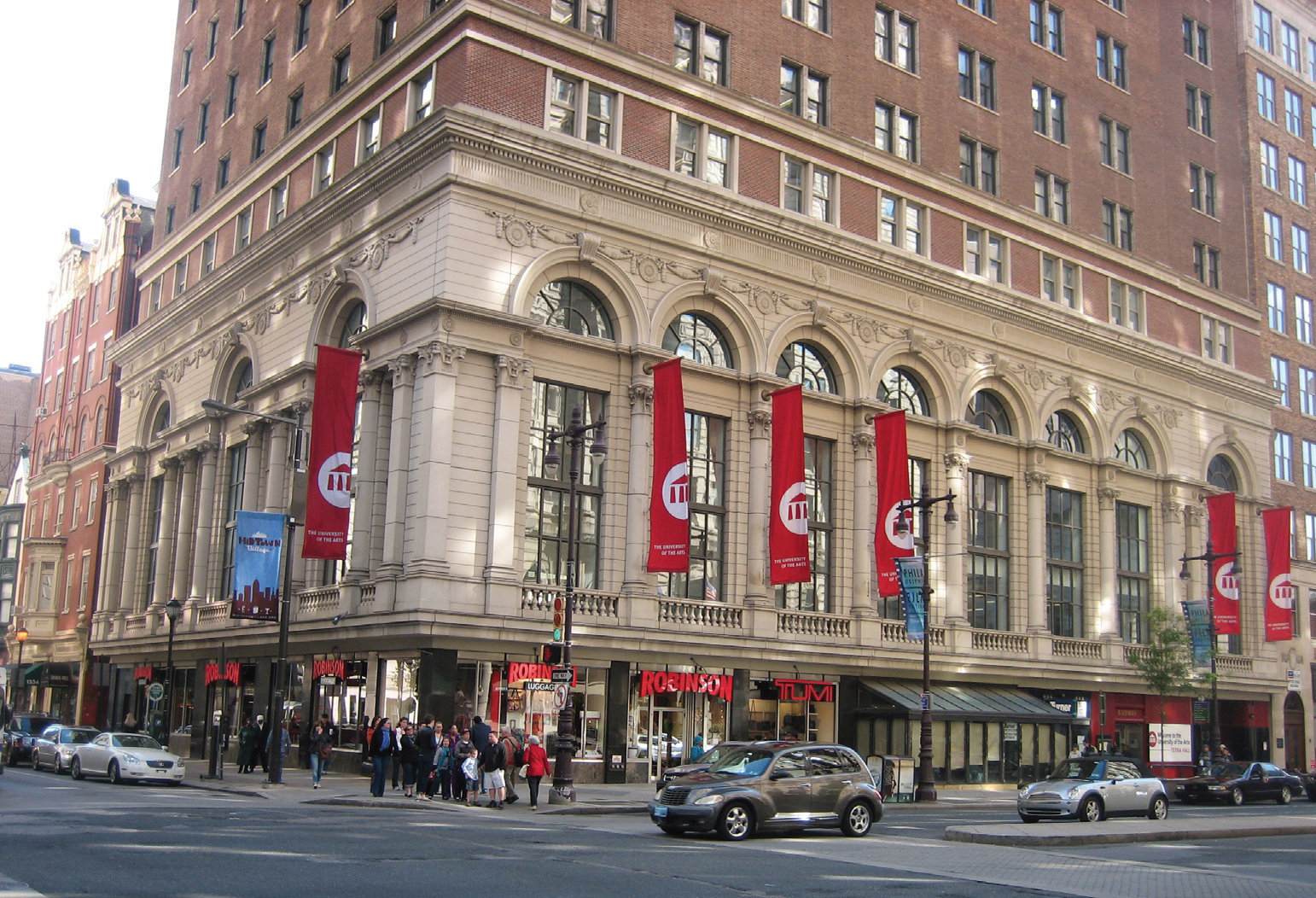
———
David Brownlee is a professor of the history of architecture in the history of art department at Penn. He has written about many aspects of the nineteenth- and twentieth century architecture of Europe and America. Brownlee is one of the vice chairs of the Design Advocacy Group and the editor of DAGspace.

DAGspace is a monthly opinion column written by members of the Design Advocacy Group (DAG), with the goal of promoting good design by encouraging thoughtful public discussion of design matters. The mission of the Design Advocacy Group is to provide an independent and informed public voice for design quality in the architecture and physical planning of the Philadelphia region.
The next DAG meeting is this Thursdsay, November 3 at 8am, at the Center for Architecture, 1218 Arch Street.
In addition to appearing on DAG’s website, you’ll be able to read DAGspace on Eyes on the Street every month. You can read previous DAGSpace articles here.
WHYY is your source for fact-based, in-depth journalism and information. As a nonprofit organization, we rely on financial support from readers like you. Please give today.






